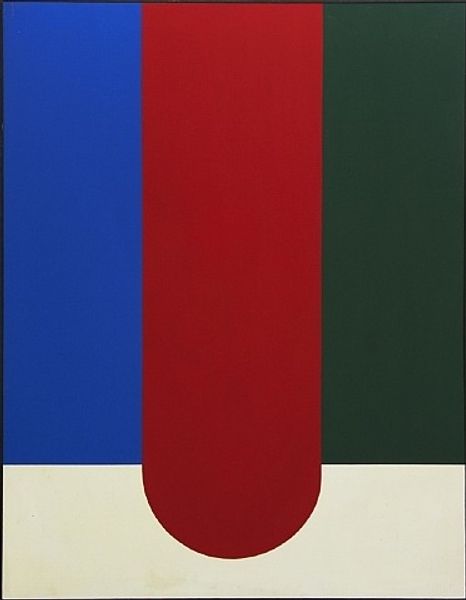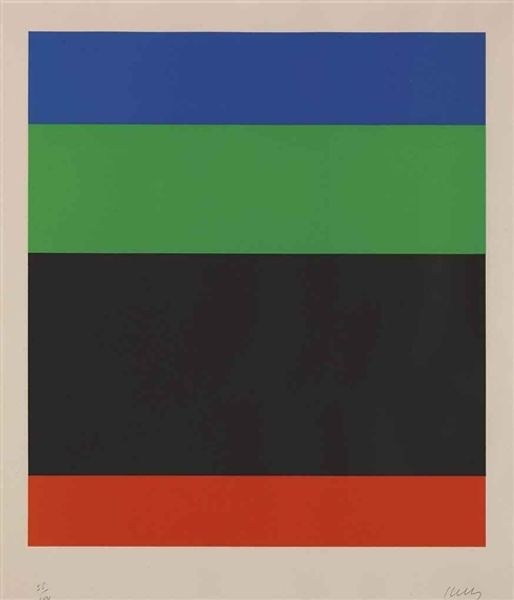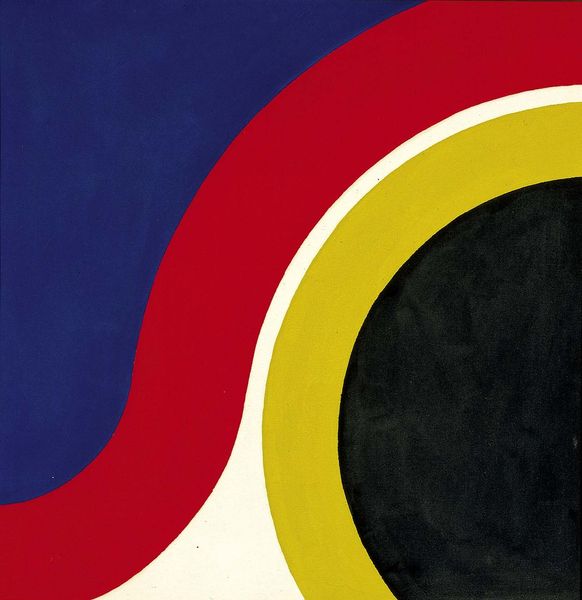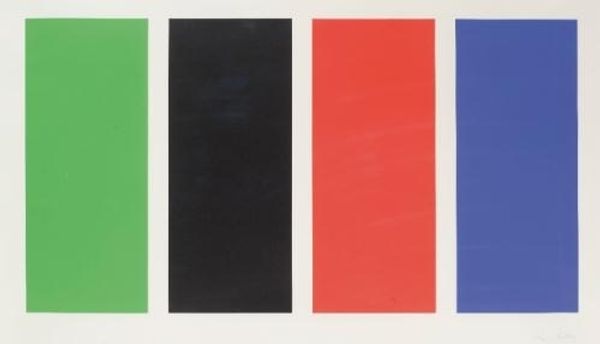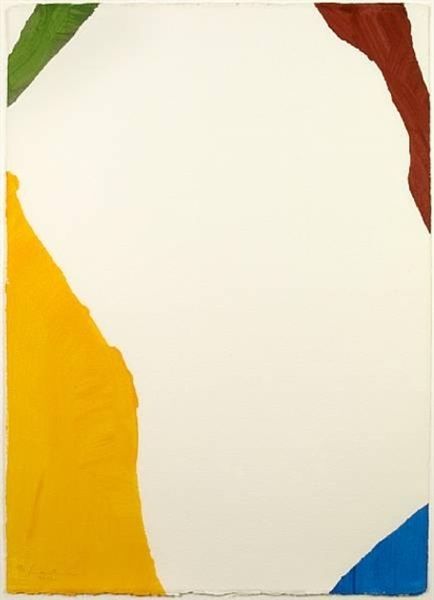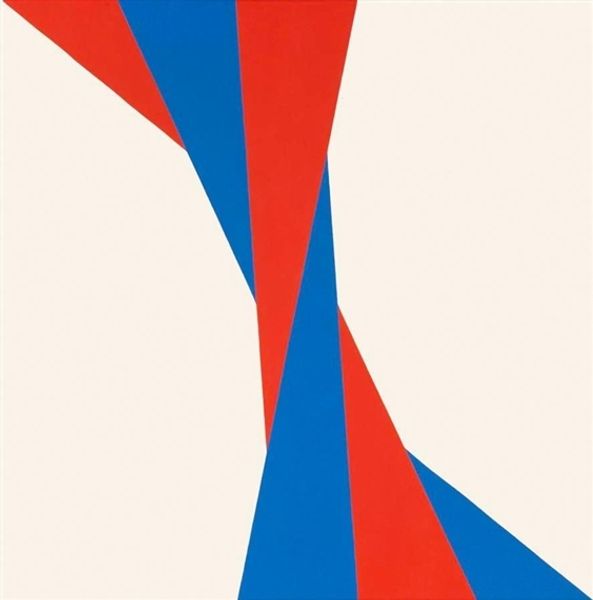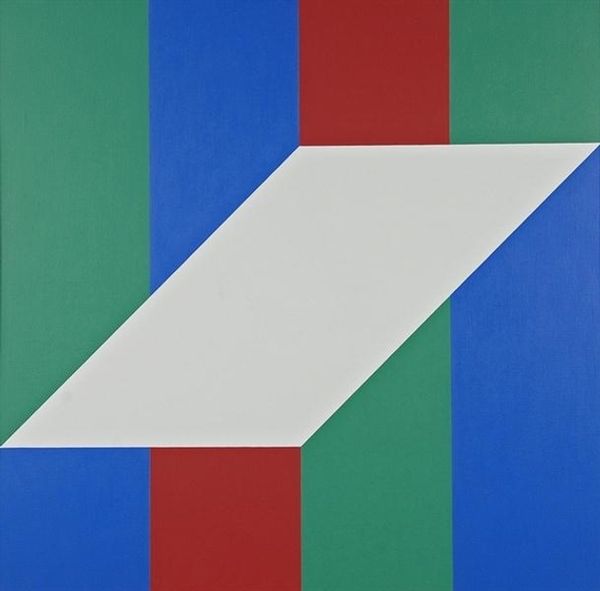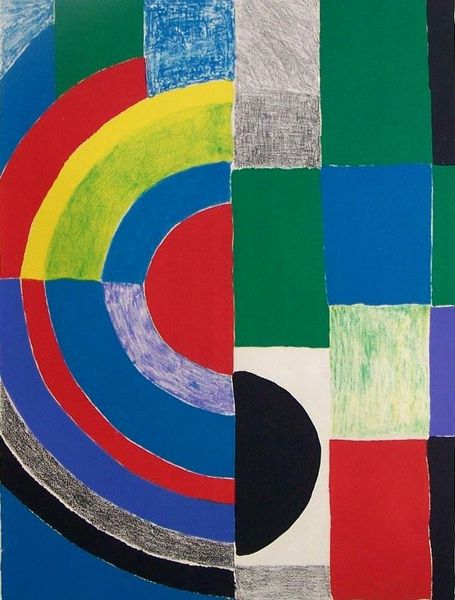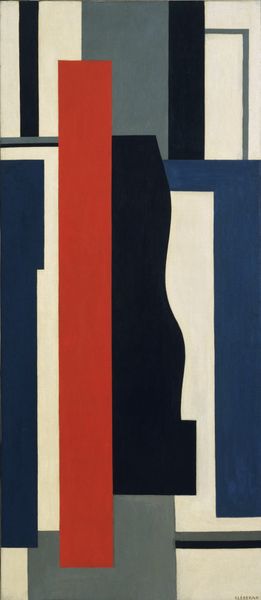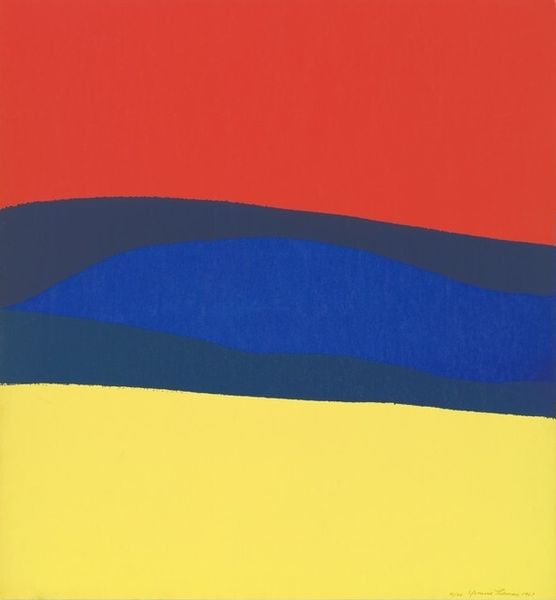
painting, acrylic-paint
abstract-expressionism
painting
pop art
colour-field-painting
acrylic-paint
form
acrylic on canvas
abstraction
line
modernism
Curator: This is an untitled work by Helen Frankenthaler from 1967, rendered in acrylic on canvas. It is a vibrant exemplar of Color Field painting, known for its large, simplified swaths of color. Editor: Immediately, I get this...calm. Is that strange? These bold colors feel serene, almost meditative. Like flags in a gentle breeze. Curator: It’s not strange at all! Frankenthaler's soak-stain technique, where she thinned the acrylic paint and poured it onto the unprimed canvas, results in this very effect. The pigment is literally integrated *into* the material, giving it a flowing, almost watercolor-like quality despite the intense hues. It eliminates any trace of gesture from the author! Editor: Gesture is gone. But you know, I see it still. There’s a tension between the raw canvas and these defined color blocks, almost like controlled chaos. Was that intentional, to play high against low, art versus raw materials? Curator: Absolutely. The embrace of the unprimed canvas was radical for its time. It blurred the boundaries between the support and the image, questioning the conventional hierarchy that separated craft and fine art. In doing so, the means of art making becomes visible as an object that's a product of artistic labour, which adds a critical dimension. Editor: And it invites a dialogue. We're not just seeing an image; we're seeing a process, a decision-making in the present of making. Each of these color interactions is intentional to push through the boundaries in our viewing experience, making it hard to accept it simply at face value! And the scale of it all! To approach something like this... it's overwhelming, you almost get pulled into this contemplative vortex. Curator: Exactly. By dematerializing the paint and making the process transparent, she foregrounds the materiality of the canvas itself and also raises complex discussions of post-war culture, consumption and commodity fetishism. It compels us to think critically about artistic production, reception, and how class interacts with aesthetic consumption in fine art. Editor: So, next time I see a canvas, I'm looking deeper. That’s the lesson, maybe? Thinking about what made the final result, not only *seeing* the effect of colours that is meant to reach the viewer. Curator: Precisely. Frankenthaler's untitled work encourages us to analyze beyond mere aesthetics, considering the social implications embedded in every artistic choice.
Comments
No comments
Be the first to comment and join the conversation on the ultimate creative platform.
